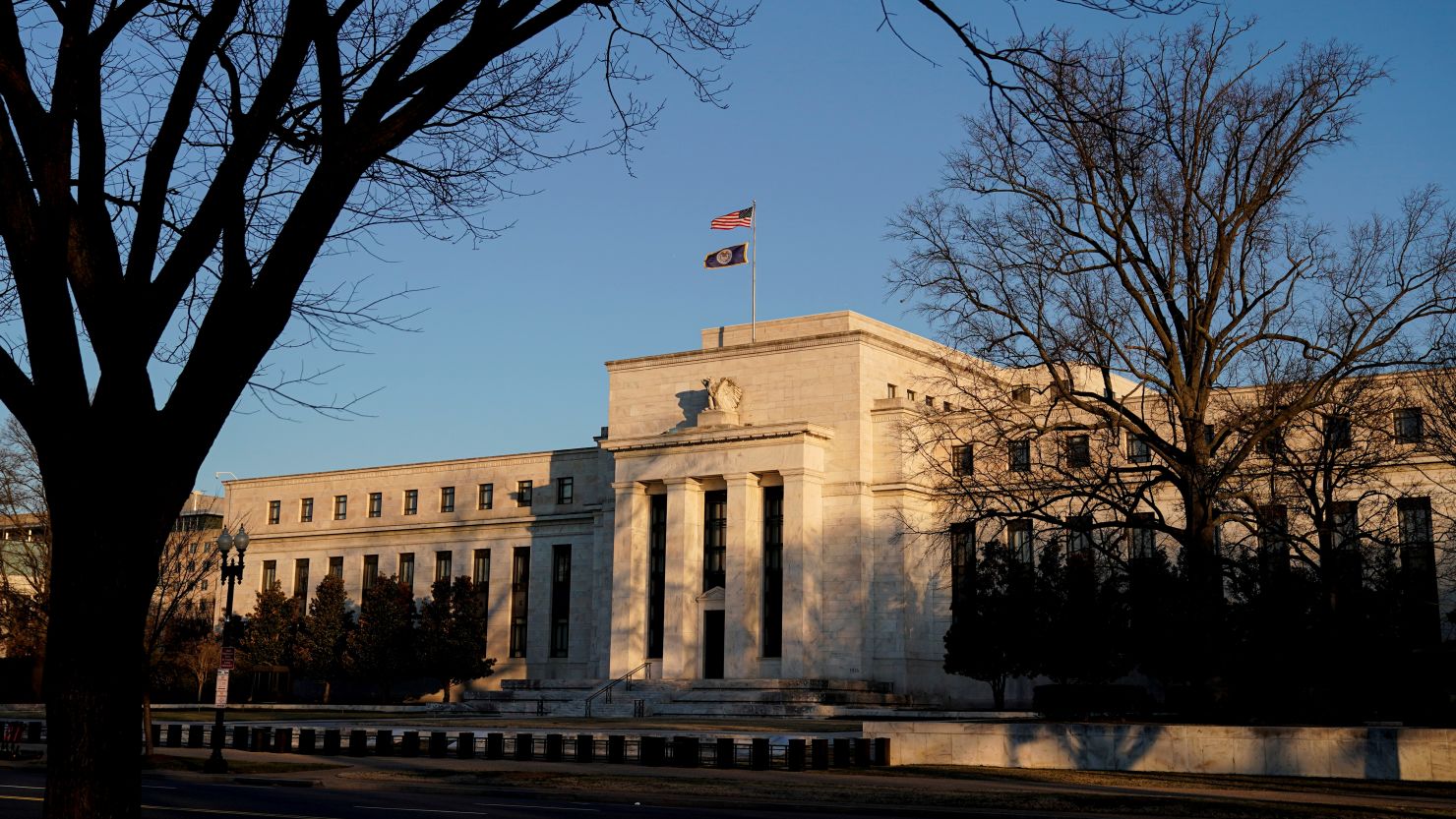A version of this story first appeared in CNN Business’ Before the Bell newsletter. Not a subscriber? You can sign up right here. You can listen to an audio version of the newsletter by clicking the same link.
This should have been the week the Federal Reserve finally begins to cut interest rates after rapidly raising them to a 23-year high, at least according to Wall Street’s hopes from just two months ago.
But disappointing inflation readings gave investors a rude awakening, and if economic data continue to show more of the same, then the Fed could very well delay the first rate cut into the fall — even if there’s a US presidential election right around the corner.
For now, traders are betting that the first rate cut will likely come in June, according to futures; to a lesser degree, some traders are betting on July. Fed officials have said they will begin to cut rates whenever they have “gained enough confidence” that inflation is under control.
The central bank could also cut if the economy suddenly weakens, pushing up unemployment sharply, and officials have also said they won’t wait until annual price increases fall all the way to the Fed’s 2% target.
But for now, stubborn price pressures in housing and services are keeping the Fed in wait-and-see mode.
Private-sector data show that rents have steadily come down over the past year, but that hasn’t meaningfully filtered through to inflation gauges just yet. Those gauges are still reacting to high shelter costs and a sharp climb in gas prices, which together contributed to 60% of the monthly jump in prices in February, according to the latest Consumer Price Index.
The Fed’s preferred inflation measure — the Personal Consumption Expenditures price index — has similarly shown that services prices haven’t been moderating as much as investors hoped.
That could be due to a variety of reasons, such as the economy’s remarkable strength possibly keeping some upward pressure on prices or rate increases not trickling to the broader, real economy just yet.
It’s not clear what the economy will look like in June, much less in September and November. But inflation could indeed stall, which would put the Fed in the difficult position of having to cut rates in the fall with the 2024 US presidential election on November 5.
“The Fed is supposed to be an apolitical institution, and by and large it is, but they’re in Washington, so they’re not immune to talks about the election or feeling pressured to some degree,” Kathy Bostjancic, chief economist at Nationwide, told CNN.
“But the Fed has all the cover it needs to cut rates around that time if it’s clear that the economic data are driving that decision,” she said.
Economists have full faith that the Fed will make that first cut in the fall — if it must.
Fed Chair Jerome Powell is a reliable advocate for the central bank’s apolitical approach to policy-making, always refusing to weigh in on what Congress ought to do or on other political issues affecting the economy, such as last year when the government almost defaulted on its debt.
“We don’t think about politics,” Powell said in December after the Fed’s decision that month. “We think about what’s the right thing to do for the economy.”
Academic research also suggests that the Fed hasn’t played politics in the past. A 1987 study by political scientist Nathaniel Beck on the Fed’s behavior during election cycles said that “the Fed does not alter its policy-making to aid presidential reelection” and that “monetary policy before an election responds to roughly the same forces as at other times.”
“[The Fed] passively responds, instead, to fiscal policy, whether electorally inspired or not,” the study said.
The Fed has already been subject to immense pressure from politicians. US Senator Elizabeth Warren of Massachusetts almost routinely pens a letter to Powell with the support of her Democratic colleagues lambasting the Fed for its decisions ahead of each policy meeting.
Donald Trump, who has secured enough delegates for the Republican presidential nomination, said in February that he would not reappoint Powell, whose term ends in 2026, because “it looks to me like he’s trying to lower interest rates for the sake of maybe getting people elected.”
The Fed seems to have been impervious to all of that criticism.
“It’s difficult in an election year to ignore what’s going on, but their mandate is to focus on the data, and from my view, the data is what they’ve been basing their decisions on,” Kayla Bruun, senior economist at Morning Consult, told CNN.
“The economic factors are going to be the overriding element in their decision-making about when and how much they might decide to cut rates,” she said.
Realtor settlement on commission-fixing could create seismic changes in how Americans buy homes
The 6% commission, a standard in home purchase transactions, is no more, report my colleagues David Goldman and Anna Bahney.
In a sweeping move expected to dramatically reduce the cost of buying and selling a home, the National Association of Realtors announced Friday a settlement with groups of homesellers, agreeing to end landmark antitrust lawsuits by paying $418 million in damages and eliminating rules on commissions.
The NAR, which represents more than 1 million Realtors, also agreed to put in place a set of new rules. One prohibits agents’ compensation from being included on listings placed on local centralized listing portals known as multiple listing services, which critics say led brokers to push more expensive properties on customers.
Another ends requirements that brokers subscribe to multiple listing services — many of which are owned by NAR subsidiaries — where homes are given a wide viewing in a local market. Another new rule will require buyers’ brokers to enter into written agreements with their buyers.
The agreement effectively will destroy the current homebuying and selling business model, in which sellers pay both their broker and a buyer’s broker, which critics say have driven housing prices artificially higher.
By some estimates, real estate commissions are expected to fall 25% to 50%, according to TD Cowen Insights. This will open up opportunities for alternative models of selling real estate that already exist but don’t have much market share, including flat-fee and discount brokerages.
Homebuilder stocks rose Friday midday on the news: Lennar shares gained 2.6%, PulteGroup shares added 1.1% and Toll Brothers shares added 1%.
Up Next
Monday: The National Association of Home Builders releases its NAHB/Wells Fargo Housing Market Index for March. The Bank of Japan announces its latest interest rate decision. The Reserve Bank of Australia announces its latest interest rate decision.
Tuesday: The US Commerce Department releases February data on housing starts and building permits.
Wednesday: Earnings from Micron Technology, General Mills, Prudential, Five Below and Tupperware. The Federal Reserve announces its latest interest rate decision and releases a fresh set of economic projections, followed by a news conference featuring Chair Jerome Powell.
Thursday: Earnings from Accenture, Nike, FedEx, lululemon, Darden Restaurants, FactSet, Academy Sports and Outdoors and Kirkland’s. The Bank of England announces its latest interest rate decision. The US Commerce Department reports on the country’s current account deficit for the fourth quarter. The US Labor Department reports the number of new applications for jobless benefits in the week ended March 16. S&P Global releases March business surveys gauging economic activity in the US manufacturing and services sectors. The National Association of Realtors reports the number of existing-home sales in February.











